It’s easy to see how the romantic ruins and pretty villages of Ayrshire inspired Scotland’s national poet
MORE FROM SCOTLAND MAGAZINE
Robert Burns, or ‘Rabbie’ as he is more affectionately known, is Scotland’s answer to William Shakespeare. Though his writing, largely written in Scots dialect, was indisputably beautiful, his enduring charm is probably down to the fact that he spoke to the common man and for them.
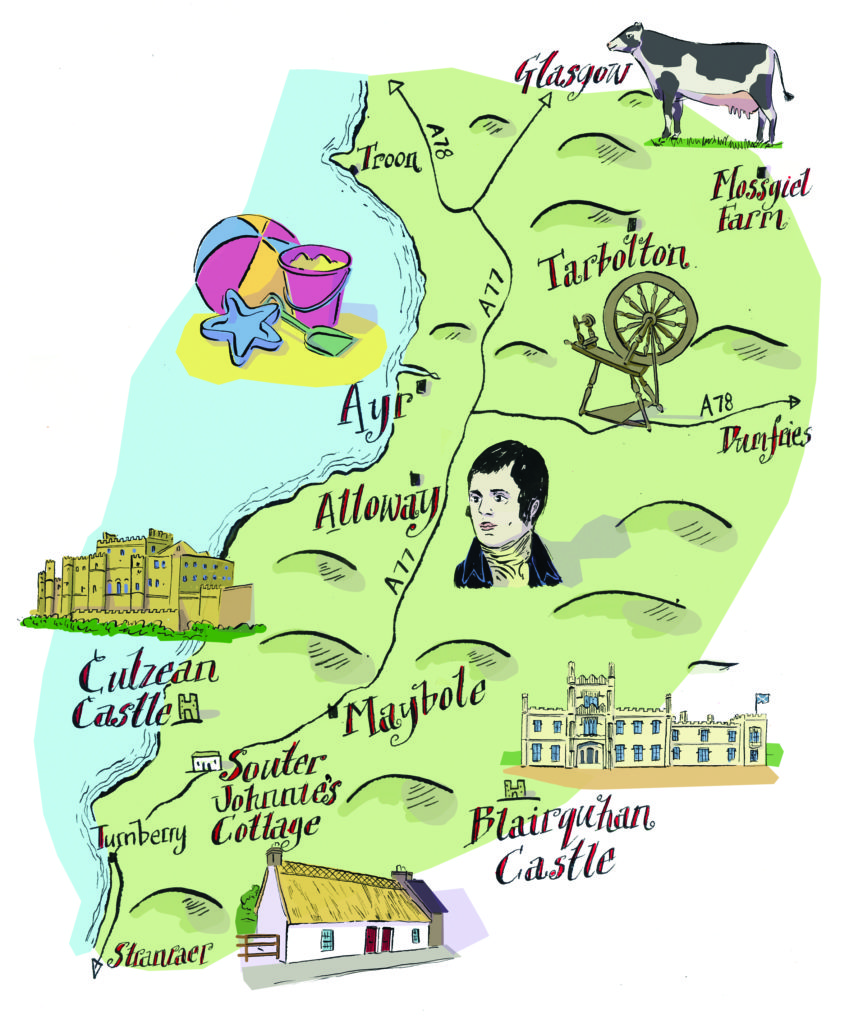
Burns was born in the little village of Alloway, just a couple of miles from the Ayrshire coast, in 1759. Though educated, Burns’ early life was humble: his father, William, was a gardener on a local estate (later a tenant farmer) and his mother, Agnes, managed the family’s smallholding.
Burns spent the first seven years of his life in Alloway, in a two-bed but and ben house with a thatched roof, built by his father. The cottage still stands, though it has been extended over the years – the byre and barn were added in the late 18th century, and during Victorian times the house became an alehouse, popular with literary tourists – and following some major restoration work it is due to reopen to the public in April 2020.
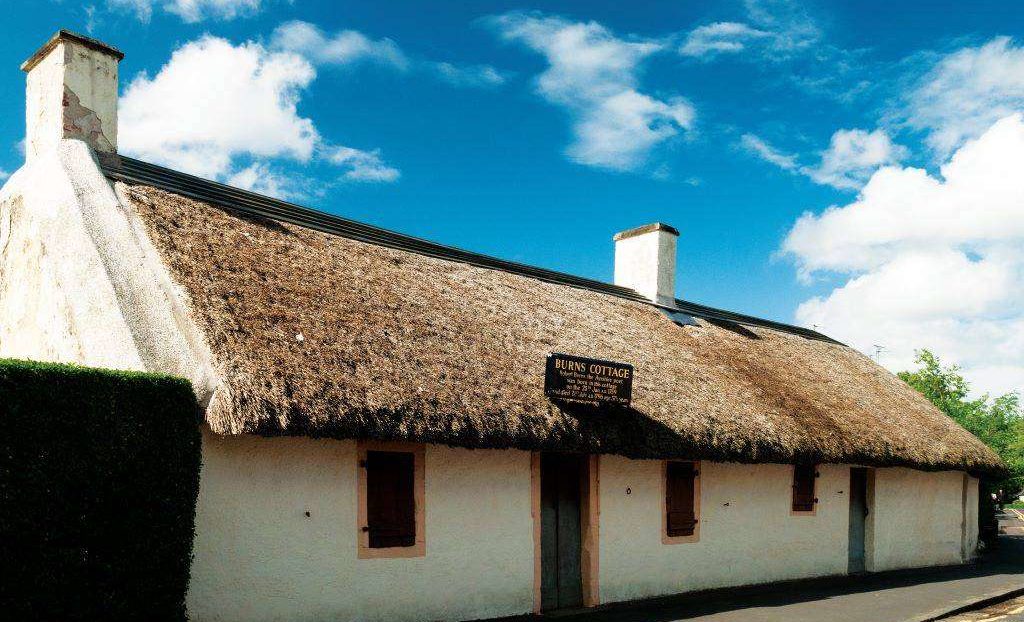
The Burns family led a simple life here – Robert was soon joined by a brother and two sisters – and a young Robert would help his mother by collecting firewood, drawing water from the well and tending to the dairy herd on the six acres of land around the property. The family lived in just two rooms with the parlour doubling as a school room: William Burnes (the name was later changed to Burns) clubbed together with some neighbours to pay for a tutor for the children.
The Robert Burns Birthplace Museum, just a short walk from Burns Cottage along Poet’s Path, celebrates Robert Burns’ life, work and legacy and brings together rare items, including handwritten manuscripts of some of his most famous works. One of the most poignant items on display is the William Burnes family bible, which lies open on a page on which William has written: “Had a son Robert 25th Jan 1759”.
You can also see the poem O Once I Lov’d a Bonnie Lass (or Handsome Nell), Burns’ first composition, written when he was “ainly” 14. It is thought the poem was about a local girl called Helen Kilpatrick, who Robert worked side by side with at harvest time.
Though Robert clearly had amorous thoughts, he didn’t consider putting them down on paper until he heard of another local boy who “had no more scholar-craft than I had” who had written a love song and so he thought he would give it a go.
Burns wrote very much as he saw and his poem To a Mouse, inspired by a mouse he upturned in her nest with a plough, is an allegory to the relationship between man and nature, but it is also perhaps a commentary on the Agricultural Revolution taking place across Scotland in Burns’ time, in which poor farmers like the Burns family (mice) were left with the cost of improving land rather than the rich landowners (the men). Aside from the cottage and the museum, there are a further three important sites linked to Burns dotted around the village.
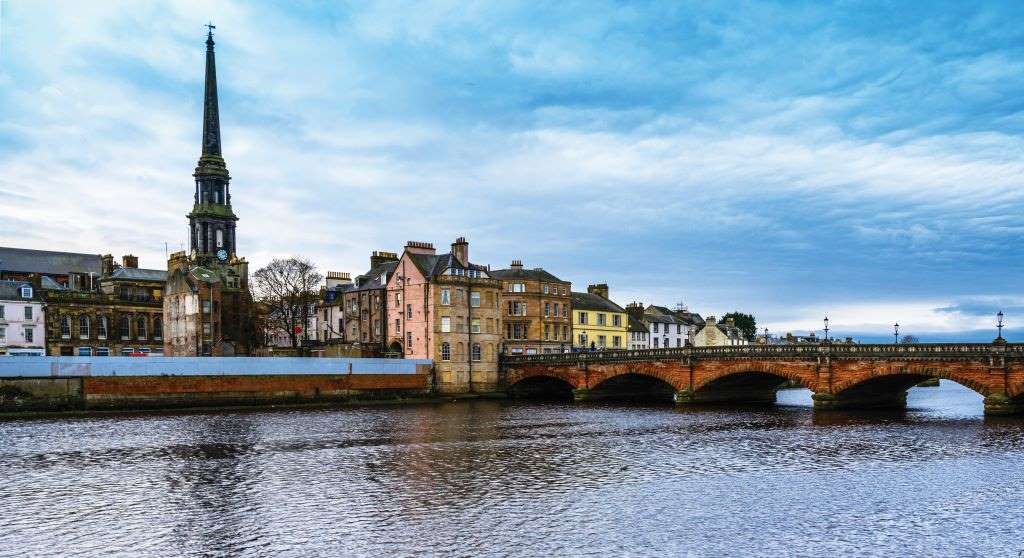
Just across the road from the museum is the Auld Kirk, where both Burns’ father and his younger sister are buried. Fans of Burns will recognise the spooky church from his narrative poem Tam O’ Shanter, “whare ghaists and houlets nightly cry”. Here, Tam first encounters the witches and warlocks that are to pursue him.
The kirk, which dates from the 16th century, was already in ruin in Burns’ time and with its weathered gable, it lends itself well to the spooky story: Burns no doubt drew on creepy tales he’d heard as a child, and perhaps games he played here with other children.
Turn right out of the kirkyard and then take a lane down to your left and you will come to the imposing Burns Monument, a Greek-inspired homage designed by Thomas Hamilton, who also designed the mausoleum over the poet’s grave in Dumfries and the Burns Monument in Edinburgh. Set in a memorial garden overlooking the River Doon and the Bridge o’ Doon, where Tam finally escapes, it is a fitting tribute to the village’s most famous son.
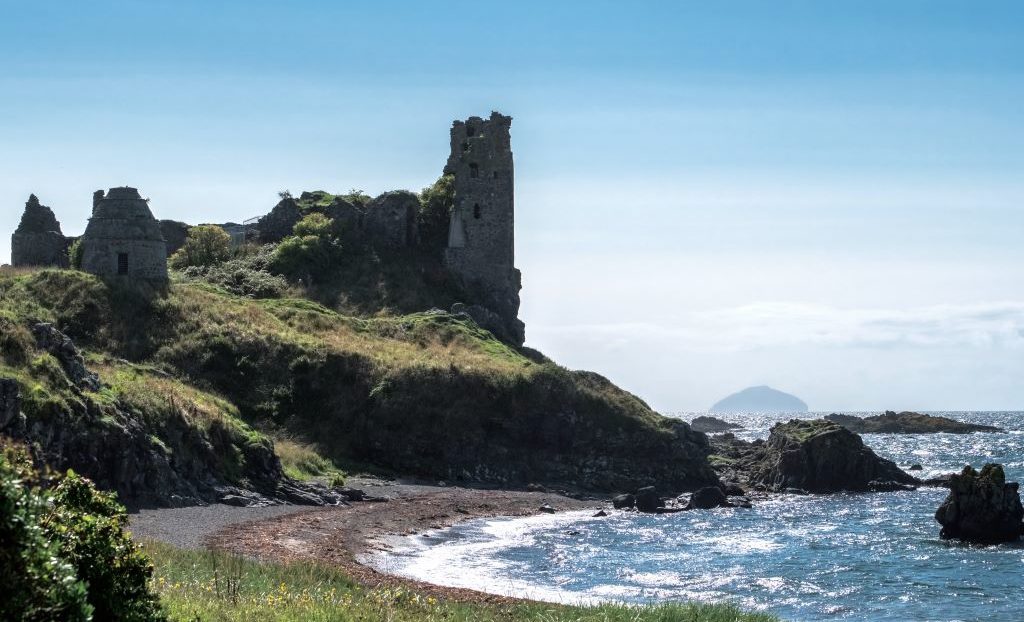
From Alloway, it’s just a 10-minute drive (or short bus ride) into the town of Ayr, where you can stroll across the golden sands of the town’s beach and enjoy views over to Arran, or venture further into the rolling farmland of Ayrshire on the trail of Burns.
When Robert was seven the family moved to Mount Oliphant Farm, just outside Alloway and in 1777 the family, which by now comprised seven children, moved to a larger farm near Tarbolton, about 10 miles northeast of Alloway.
It was in Tarbolton that Burns set up the Bachelors’ Club, a men-only debating club, in meeting rooms above a 17th-century house. Today the red-shuttered thatched building has been carefully restored and is home to a museum, which offers a slice of living history and insight into the social lives of 18th-century men.
After his father died, Burns moved to Mauchline, five miles east of Tarbolton, where he lived from 1784-1788. It was here that he met and married Jean Armour and today the red brick cottage where they lived is open to the public for free as the Burns House Museum. Visitors can also learn about two local industries: curling stones and Mauchline Boxware, which were small wooden collectible souvenirs.
Burns’ mother, Agnes, was born and grew up in the small market town of Maybole, just six miles south of Alloway, and it was here that she met Burns’ father in 1757 – a white bust of Burns marks the location. Maybole is home to some spectacular architecture but its most impressive building lies just to the west: Culzean Castle. This L-plan castle, built on the orders of the 10th Earl of Cassilis by revered architect Robert Adam on the site of a much simpler castle, was erected in Burns’ time, though back then it wouldn’t have been open to the public.
Today, visitors can wander through the extensive grounds and gardens, take a guided tour of the delightful interiors or even stay on site at the Eisenhower, a private apartment that was the holiday home of the US President from 1945 until his death in 1969. Further Burns connections can be found in the pretty village of Kirkoswald, just south of the castle, where you can visit Souter Johnnie’s Cottage, the 18th-century home of the shoemaker who features in Tam O’Shanter.
After the publication of his first collection of poems, Burns spent much of his time in Edinburgh, but it’s clear that his homeland of Ayrshire was never too far from his mind.
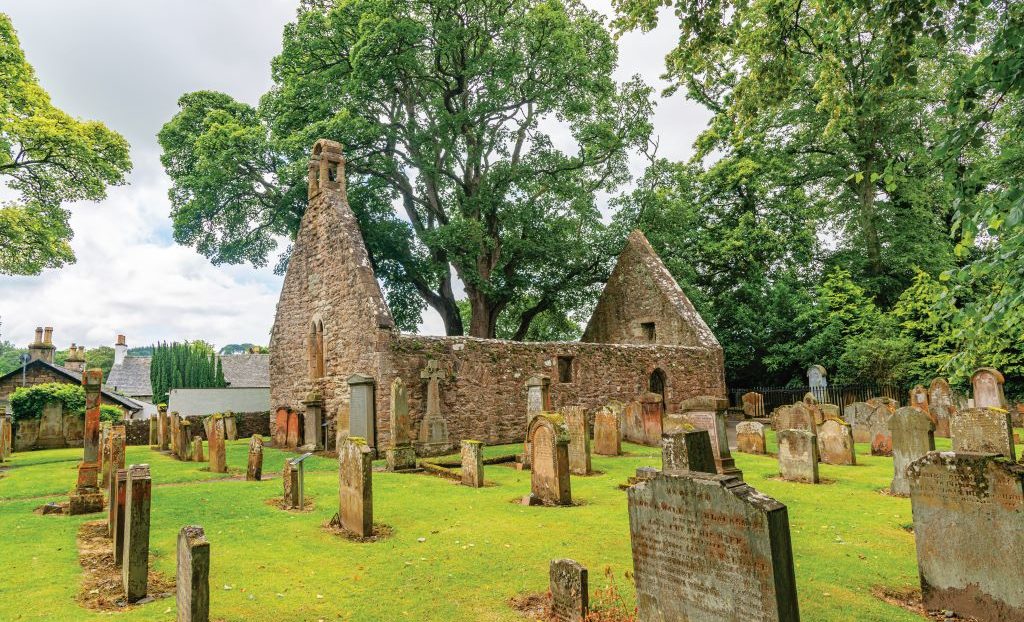
Robert Burns Country lies in The Shire, one of five new routes that passes through Ayrshire, Bute and nearby Arran, known as The Còig (‘còig’ means ‘five’ in Gaelic). Here are some of the other places you can stop off at en route.
Blairquhan Castle, Maybole
Though this grand castle, just outside the village of Straiton and a short drive from Maybole, is only available for exclusive use hire, smaller groups or couples can stay in one of eight lovely and well-equipped cottages set within the sprawling grounds. blairquhan.co.uk
Dunure Castle, Dunure
Once the main castle for the ruling Kennedy clan (the Earls of Cassilis), who built Culzean, this ruined castle perched on a cliff’s edge may not have Culzean’s grandeur but it may just rival its history – Mary, Queen of Scots stayed here in 1563 – and it is every bit as atmospheric. visitscotland.com
Culzean Castle, Maybole
A beautiful castle with original Robert Adam features and stunning grounds that are
home to an orangery, walled garden, and deer park. nts.org.uk
A D Rattray Whisky Experience, Kirkoswald
If you like to try rare whiskies on your travels, then let these experts guide you. They can also arrange overseas deliveries. adrattray.com
Greendolphins Glass, Kirkoswald
Meet a Scottish maker in his studio (right next door to A D Rattray) and find a unique handmade gift to take home. greendolphins.com
Malin Court Hotel, Girvan
Take high tea in the dining room of this hotel, in the heart of Ayrshire’s golfing territory. malincourt.co.uk
Woodland Bay Hotel, Girvan
Set along the Ayrshire coast on a former farm, this hotel has comfortable rooms and a good restaurant (in the old lambing shed) with a well-stocked whisky bar and friendly staff. woodlandbayhotel.co.uk
GG’s Coffee Shop & Sports Lounge, Irvine
Set within the smart surrounds of Gailes Hotel, this café is a great pitstop for those visiting the nearby maritime museum. gaileshotel.com
Robert Burns Birthplace Museum, Alloway
A must-visit for any self-respecting Burns fan, this museum, together with the poet’s nearby cottage, offers invaluable insight into his life and times. nts.org.uk
Scottish Maritime Museum, Irvine
Learn about Scotland’s rich maritime history at this gem of a place, just north of Ayr. scottishmaritimemuseum.org
The Coig
For details on The Shire and the other four unique touring routes that form The Coig, visit the comprehensive website. thecoig.com
MORE FROM SCOTLAND MAGAZINE

SCOTLAND MAGAZINE
Published six times a year, every issue of Scotland showcases its stunning landscapes and natural beauty, and delves deep into Scottish history. From mysterious clans and famous Scots (both past and present), to the hidden histories of the country’s greatest castles and houses, Scotland‘s pages brim with the soul and secrets of the country.
Scotland magazine captures the spirit of this wild and wonderful nation, explores its history and heritage and recommends great places to visit, so you feel at home here, wherever you are in the world.